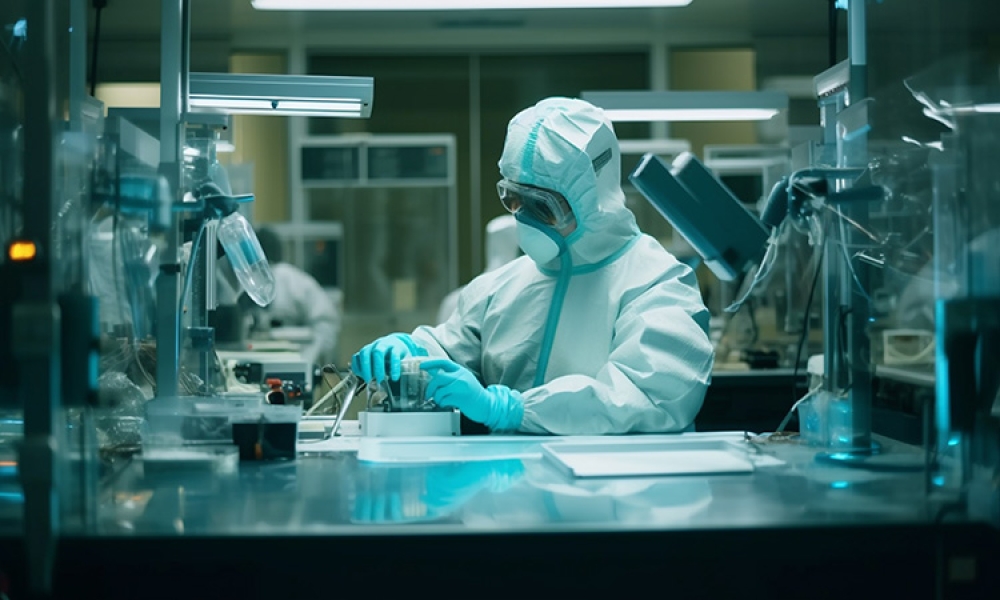The Evolution of Process Validation: From Box-Checking to Lifecycle Approach to Biologics Continuous Manufacturing

When I started in industry back in the mid-90’s, process validation was mostly a box checking activity. Many in industry would begrudgingly conduct slightly increased (e.g. 2x or 3x versus routine release) testing on validation batches without evaluating the process or data more than confirming the additional testing met specifications. The box for having completed validation was considered checked when specifications had been met and three batches had been run. Very few, at that time, were using statistical evaluations of the process such as control charts for intra/inter-batch variability, or other graphical assessments, and/or applying statistical alert limits to the release process. At that time, I do not believe any pharma/bio-pharma manufacturers were using statistical evaluations of development data to determine the level of testing required in validation to provide confidence in the product prior to reducing testing levels to routine release.
I suspect that there were many deviations and even recalls that may have been prevented through the application of more scientific rigor being applied to early (e.g. development) assessments of process performance with enhanced assessments of the process as part of process validation (PPQ) to ensure processes are better understood and thus better controlled. Process understanding and control through “real time” analysis with the establishment of expected values (control limits and /or capability thresholds) was seen as too cumbersome a process despite the increasing number of deviations, failures and eventual drug shortages.
In 2011, with the FDA Lifecycle Process Validation guidance issuance, things shifted. At first, all were not believers in what the FDA was calling for, lifecycle process validation and commensurate process understanding, and believed the FDA expectations could be met through the annual product review and more proactive process evaluations were not needed. In other words, maintaining the status quo. Due to this now being a regulatory expectation and some of the questions that were being asked during regulatory inspections, behaviors began to shift. Industry did not know this as the time but, most if not all found both quality (reduced deviations/OOS rates, etc.) and business positive impacts (yield increases, cycle time decreases, inventory opportunities, etc.) from this shift. Terms like the Cost of Poor Quality (CoPQ), capability, OC Curve, confidence level and other statistical terms became part of the pharmaceutical lexicon, with high visibility at high levels in most organizations.
Development (Stage 1) data began to be leveraged to determine the focus and level of PPQ (Stage 2) testing needed to demonstrate confidence (90%, 95%, etc.) and coverage in the process prior to defaulting to routine release testing. Development data was also more highly scrutinized to determine the number of PPQ batches that would truly provide confidence in the process. Release testing also began to take on a new form with the continuance of PPQ level testing until various pre-establish thresholds were met to ensure process robustness. The Annual Product Quality Review (APQR or PQR, etc.) also began to transform with much more frequent evaluations (batch, campaign, etc.) of the process to assess for shifts or trends with action plans to return processes to optimal performance as opposed to investigating failures where processes had already lost control.
All of these elements combined, I believe, to convert pharmaceutical and biopharmaceutical manufacturing to become lean six-sigma operations with a focus which ensures the delivery of the highest quality product to patients. As such, development to launch timelines can now be condensed with more forethought going into early stage activities to ensure process knowledge is planned for and gained at the earliest stages of project initiation.
It’s a good thing that Pharmaceutical manufacturers have seen the light and are now believers in the lifecycle process because the biopharmaceutical world is now moving at the speed of light and needs industry to keep up. Some of those new challenges include how we will deliver continuous manufacturing processes, individualized cell/gene therapies and robust processes globally in tightened timeframes.
Continuous manufacturing can help us deliver product with reduced cycle times, streamlined technology transfer timelines, and reduced manufacturing footprints; however, this will require an almost exponential increase in our process knowledge and understanding versus where we came from in the very recent past. Models which link input attributes (raw materials, process/environmental conditions, etc.) need to be developed with an understanding of the real time impact to product outputs and procedures to respond are required as batch processing is on-going. With the advanced analytics that accompany continuous manufacturing and a move to “big data” processes, there also needs to be an understanding of which analytics are key and need to be the focus of manufacturing. A whole new set of questions need to be answered to successfully validated continuous processes and box checking will certainly not suffice.
Individualized cell/gene therapies also turn much of our recently established lifecycle thinking upside down. How can we demonstrate process knowledge and control for a process that has true sample size of one? Now that we are using statistical tools to provide confidence and coverage, how do we apply this knowledge to individualized medicines? Cell and gene therapies are also changing the way some critical/life threatening medical conditions are eradicated with significant impacts to both life expectancy rates as well as quality of life for patients and require industry to reduce the timeframes from development to launch to deliver products which significantly impact and/or literally save lives. There is often no alternative treatment available for the conditions which are being treated with cell/gene therapies. All of this means an increase in breakthrough therapy designations with a decrease in the time available to confidently develop and demonstrate life-altering medications performance.
Case studies, current thinking and benchmarking discussions on how to answer these newly arising questions in the PV space will be included in the Next Generation Challenges in Process Validation session as part of the ISPE Process Validation workshop on Challenges in Bio Process Validation: Current and Next Generation June 20-21st in Boston, MA, please join us for the discussions



